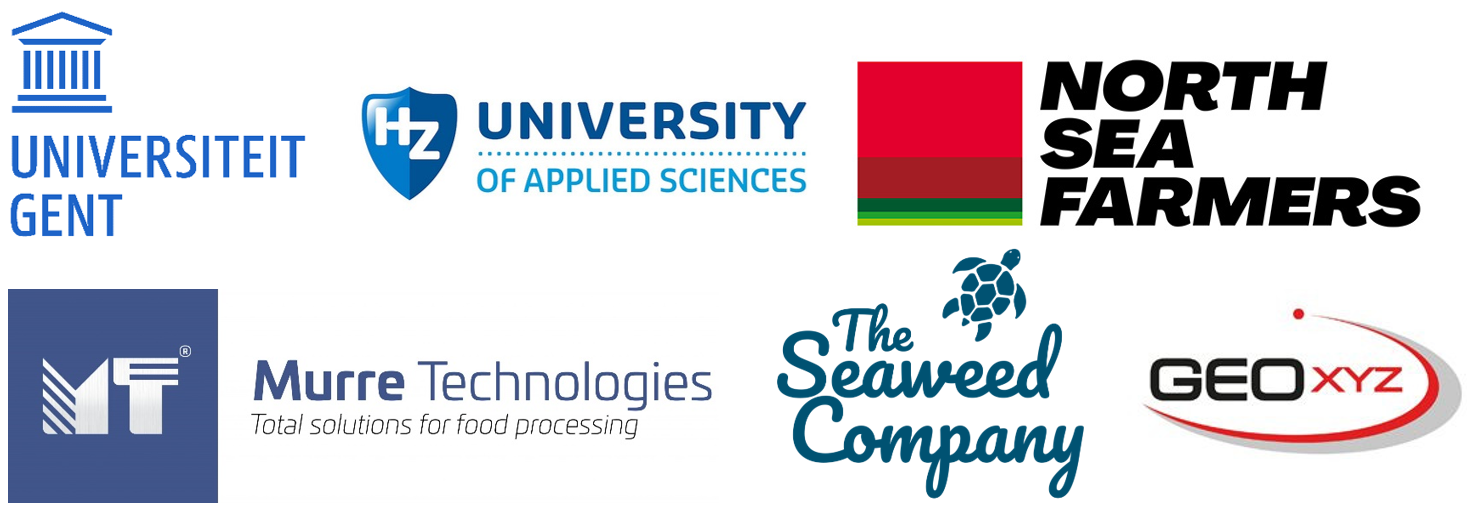Explore the roadmap
Purpose and Collaboration
Designed as a collaborative tool, the roadmap outlines key steps for the sector's future growth and serves as a resource for stakeholders interested in the impacts and timeline of scaling up.
Navigate the roadmap to gain insights into the economic, social, and environmental prospects of European seaweed production, and join us in charting a sustainable path forward.
10 point action plan 2030
Based on the roadmap, we have developed a 10 point action plan 2023. These are 10 important and urgent action points that can directly support the development of the seaweed industry.
The future seaweed sector
The seaweed sector in 2050 offers numerous benefits to our society. In the form of clean and healthy living conditions on land and at sea, sustainable resources, circular products and solutions and high-quality employment.
Production volume
As a sector, we want to focus on a yearly production volume of 1-10mln tons of fresh seaweed. Using, available space on land, salt water resources in sheltered areas but primarily at sea in the wind farms in the North Sea.
By 2050, the total production area of the seaweed sector will have increased to 1,000-10,000 km2. This is up to 3% of the total production area of wind farms as aspired in the Ostend agreement[1].
Circular products and solutions
In 2050, the markets for building materials, food, agriculture and packaging are all using products and solutions with seaweed. No longer because it’s a sustainable alternative but because regulations and consumers have enforced the transition to circular value chains.
Seaweed is an ideal resource because it can be produced locally, on large scale and in virtually closed nutrient and carbon cycles. The (cascaded) applications are so versatile that hardly any waste is generated and almost all applications are biodegradable.
independent markets
Previously, Europe was largely dependent on global supply lines. Now, in 2050, seaweed can fill a large part of the market demand in food, feed, fertilizers and packaging with locally produced seaweeds as main resource.
Because it is produced in all seas and salty waters of Europe and to some extent even on land, the market has access to many different types of raw material at different times in the season. Also to compensate for regional under- and overproduction.
Employment in the seaweed industry
By 2050, at least 85,000 FTEs will be employed in the European seaweed industry, directly and indirectly[2]. A varied mix of academic and practical talents that are often close to the coast and are continuously improving quality, yield, cost-effectiveness as well as the (marine) ecosystem.
Europe has become knowledge leader in the fields of crop cultivation, biorefinery, product development, circularity and nature restoration.
Impact on nature, sea and climate
By means of a validated blue carbon standard, seaweed farms make an important contribution to capturing and avoiding CO2. By means of standardized production methods, seaweed farms make an active contribution to nature restoration at sea.
Per seaweed farm, about 800 reef-enhancing structures will be placed on the currently bare North Sea bottom for a long time. This leads to a sharp increase in biodiversity in the North Sea.
[2] "Seaweed for Europe - Hidden Champion of the Ocean - Report" - 2021
The initial roadmap is designed as part of the project INTERREG Wier & Wind.
Project responsible: Olivier de Clerck
Document prepared & issued by: North Sea Farmers
Work package: 6, Referention project: 0594, Date: 06-03-2023

